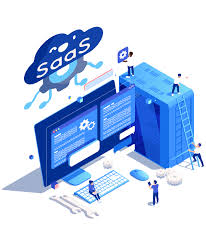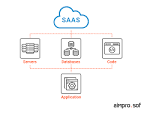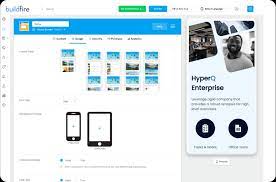Empowering Businesses: The Role of a SaaS Development Company in Today’s Digital Landscape
The Rise of SaaS Development Companies
In recent years, Software as a Service (SaaS) has become increasingly popular among businesses looking for flexible and cost-effective software solutions. As a result, the demand for SaaS development companies has surged, with many organizations turning to these specialized firms to build custom applications tailored to their unique needs.
A SaaS development company specializes in creating cloud-based software applications that are accessible through the internet. These companies leverage cutting-edge technologies and agile development methodologies to deliver scalable and secure solutions that can be easily deployed and managed by clients.
One of the key advantages of partnering with a SaaS development company is the ability to quickly bring innovative products to market. These firms have the expertise to rapidly prototype, test, and iterate on software solutions, allowing businesses to stay ahead of the competition in today’s fast-paced digital landscape.
Furthermore, SaaS development companies offer a range of services beyond just software development. They often provide ongoing maintenance and support to ensure that applications remain up-to-date and perform optimally. Additionally, many firms offer consulting services to help businesses identify opportunities for further optimization and growth.
As businesses continue to embrace cloud-based technologies, the role of SaaS development companies will only become more critical. These firms play a vital role in helping organizations leverage the power of the cloud to drive innovation, improve efficiency, and enhance customer experiences.
In conclusion, SaaS development companies are at the forefront of digital transformation, enabling businesses to harness the full potential of cloud computing. By partnering with these specialized firms, organizations can unlock new opportunities for growth and success in an increasingly competitive marketplace.
8 Essential Tips for Building a Successful SaaS Development Company
- Understand your target market and their needs.
- Focus on creating a user-friendly interface and intuitive user experience.
- Prioritize data security and compliance with industry standards.
- Implement scalable architecture to accommodate growth and increasing demand.
- Provide excellent customer support to ensure client satisfaction.
- Regularly update and improve your software based on feedback and market trends.
- Collaborate with other SaaS providers or technology partners for integrations and mutual benefits.
- Stay updated on the latest technologies and innovations in the SaaS industry.
Understand your target market and their needs.
To succeed as a SaaS development company, it is crucial to thoroughly understand your target market and their specific needs. By conducting in-depth research and analysis, you can gain valuable insights into the pain points, preferences, and expectations of your potential customers. This knowledge allows you to tailor your software solutions to address their challenges effectively, ensuring that your products resonate with the target audience and provide tangible value. By prioritizing a customer-centric approach and aligning your development efforts with the demands of the market, you can position your SaaS company for long-term success and sustainable growth.
Focus on creating a user-friendly interface and intuitive user experience.
When developing software as a service (SaaS), it is crucial to prioritize the creation of a user-friendly interface and an intuitive user experience. By focusing on designing a platform that is easy to navigate, visually appealing, and responsive to user interactions, SaaS development companies can enhance customer satisfaction and drive user adoption. A well-crafted user interface not only improves usability but also reflects the company’s commitment to delivering a high-quality product that meets the needs and expectations of its users.
Prioritize data security and compliance with industry standards.
When working with a SaaS development company, it is crucial to prioritize data security and compliance with industry standards. Ensuring that sensitive information is protected and that all data handling practices adhere to established regulations is paramount in maintaining trust with customers and safeguarding against potential breaches. By placing a strong emphasis on data security measures and compliance protocols, businesses can mitigate risks, build credibility, and demonstrate their commitment to upholding the highest standards of privacy and protection for their users’ data.
Implement scalable architecture to accommodate growth and increasing demand.
To ensure the long-term success of a SaaS development company, it is crucial to implement a scalable architecture that can accommodate growth and increasing demand. By designing a flexible and robust infrastructure, the company can easily expand its services, handle higher volumes of users, and adapt to changing market conditions. Scalable architecture allows for seamless integration of new features and functionalities, ensuring that the software remains efficient and reliable even as the business grows. This proactive approach not only future-proofs the company’s technology stack but also enhances its ability to meet customer needs effectively.
Provide excellent customer support to ensure client satisfaction.
Providing excellent customer support is crucial for a SaaS development company to ensure client satisfaction. By offering responsive and knowledgeable support services, clients feel valued and supported throughout their software usage journey. Timely assistance with technical issues, clear communication, and proactive problem-solving can enhance the overall client experience, leading to increased trust and loyalty towards the company’s services. Prioritizing customer support not only resolves immediate concerns but also builds long-term relationships based on reliability and professionalism.
Regularly update and improve your software based on feedback and market trends.
To ensure the success and relevance of your SaaS development company, it is crucial to regularly update and enhance your software based on feedback from users and emerging market trends. By actively listening to customer feedback and staying informed about industry developments, you can make informed decisions to improve the functionality, usability, and overall user experience of your software. This iterative approach not only helps you address existing issues but also allows you to stay ahead of the curve by incorporating new features and technologies that meet the evolving needs of your target audience.
Collaborate with other SaaS providers or technology partners for integrations and mutual benefits.
Collaborating with other SaaS providers or technology partners for integrations can be a strategic move for a SaaS development company. By working together, companies can create seamless integrations between their products, offering customers a more comprehensive and interconnected solution. This collaboration not only enhances the value proposition for clients but also opens up new opportunities for mutual benefits, such as shared resources, expanded market reach, and increased innovation through knowledge exchange. Ultimately, partnering with other SaaS providers or technology partners can lead to a stronger competitive advantage and drive growth for all parties involved.
Stay updated on the latest technologies and innovations in the SaaS industry.
To thrive in the competitive landscape of SaaS development, it is crucial for companies to stay updated on the latest technologies and innovations in the industry. By keeping abreast of emerging trends and advancements, SaaS development companies can adapt their strategies, enhance their offerings, and deliver cutting-edge solutions that meet the evolving needs of their clients. Continuous learning and exploration of new technologies not only ensure a competitive edge but also drive innovation and excellence in the rapidly evolving SaaS landscape.









